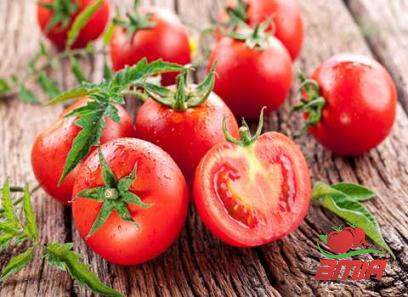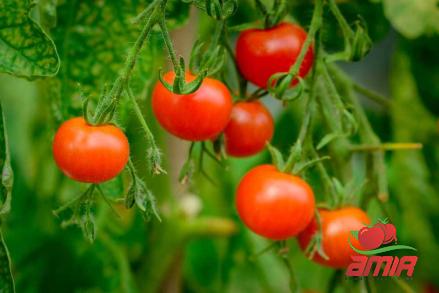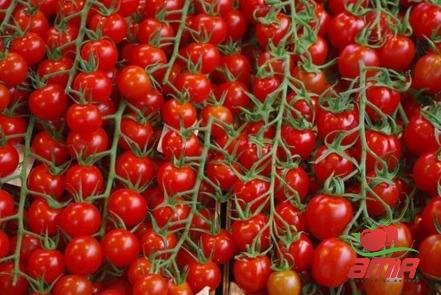In recent years, the trend of making homemade condiments and pantry staples has been on the rise. Not only does it allow for customization and control over ingredients, but it also ensures a fresher and more flavorful end product. One such pantry essential that is a staple in many kitchens is tomato paste. While store-bought options are readily available, making your own tomato paste at home can be a rewarding and budget-friendly endeavor. In this comprehensive guide, we will delve into the art of making homemade tomato paste using a dehydrator, exploring the process from start to finish.

.
 Why Use a Dehydrator for Making Tomato Paste: A dehydrator is a versatile kitchen appliance that can be a game-changer when it comes to making tomato paste at home. Unlike other methods such as oven-drying or sun-drying, a dehydrator offers precise temperature control and consistent airflow, which are crucial for drying the tomatoes evenly and preserving their flavor and nutrients. In addition, a dehydrator allows for a hands-off approach, making the process more convenient and less labor-intensive. Selecting the Right Tomatoes: The key to delicious homemade tomato paste lies in the quality of the tomatoes you use. Look for ripe, juicy tomatoes that are free of blemishes and bruises. Varieties such as Roma tomatoes, San Marzano tomatoes, or any meaty and low-moisture tomatoes are ideal for making tomato paste, as they have few seeds and a rich, intense flavor. It is recommended to use fresh, locally sourced tomatoes for the best results. Preparing the Tomatoes: Before you can start dehydrating the tomatoes to make paste, they need to be prepared properly. Wash the tomatoes thoroughly and remove any stems or blemishes. If desired, you can peel the tomatoes by blanching them in boiling water for a few seconds and then plunging them into an ice bath to make the peeling process easier. Once the tomatoes are cleaned and peeled, cut them into quarters or halves, depending on their size, to facilitate the drying process. Dehydrating the Tomatoes: When it comes to dehydrating tomatoes for making paste, the process involves removing the moisture from the tomatoes to concentrate their flavor and sweetness. Set your dehydrator to a temperature between 135°F to 140°F (57°C to 60°C) for optimal drying. Arrange the tomato pieces in a single layer on the dehydrator trays, making sure they are not touching each other to allow for proper airflow. Depending on the size and moisture content of the tomatoes, dehydration can take anywhere from 12 to 24 hours. Checking for Doneness: To determine if the tomatoes are adequately dehydrated and ready for processing into paste, check for a leathery texture and a significant reduction in moisture content. The tomatoes should be pliable but not overly dry or crispy. A good test is to try tearing a piece of tomato – it should offer some resistance but not be too tough.
Why Use a Dehydrator for Making Tomato Paste: A dehydrator is a versatile kitchen appliance that can be a game-changer when it comes to making tomato paste at home. Unlike other methods such as oven-drying or sun-drying, a dehydrator offers precise temperature control and consistent airflow, which are crucial for drying the tomatoes evenly and preserving their flavor and nutrients. In addition, a dehydrator allows for a hands-off approach, making the process more convenient and less labor-intensive. Selecting the Right Tomatoes: The key to delicious homemade tomato paste lies in the quality of the tomatoes you use. Look for ripe, juicy tomatoes that are free of blemishes and bruises. Varieties such as Roma tomatoes, San Marzano tomatoes, or any meaty and low-moisture tomatoes are ideal for making tomato paste, as they have few seeds and a rich, intense flavor. It is recommended to use fresh, locally sourced tomatoes for the best results. Preparing the Tomatoes: Before you can start dehydrating the tomatoes to make paste, they need to be prepared properly. Wash the tomatoes thoroughly and remove any stems or blemishes. If desired, you can peel the tomatoes by blanching them in boiling water for a few seconds and then plunging them into an ice bath to make the peeling process easier. Once the tomatoes are cleaned and peeled, cut them into quarters or halves, depending on their size, to facilitate the drying process. Dehydrating the Tomatoes: When it comes to dehydrating tomatoes for making paste, the process involves removing the moisture from the tomatoes to concentrate their flavor and sweetness. Set your dehydrator to a temperature between 135°F to 140°F (57°C to 60°C) for optimal drying. Arrange the tomato pieces in a single layer on the dehydrator trays, making sure they are not touching each other to allow for proper airflow. Depending on the size and moisture content of the tomatoes, dehydration can take anywhere from 12 to 24 hours. Checking for Doneness: To determine if the tomatoes are adequately dehydrated and ready for processing into paste, check for a leathery texture and a significant reduction in moisture content. The tomatoes should be pliable but not overly dry or crispy. A good test is to try tearing a piece of tomato – it should offer some resistance but not be too tough.
..
 Once the tomatoes have reached this stage, they are ready to be turned into tomato paste. Processing the Dehydrated Tomatoes: After the tomatoes have been dehydrated, it is time to process them into a concentrated paste. This can be done using a food processor, blender, or mortar and pestle, depending on the texture you desire. Simply pulse the dried tomatoes until they form a thick, smooth paste. You can add a small amount of olive oil or water to help achieve the desired consistency. Storing and Preserving Homemade Tomato Paste: Once you have made your own tomato paste, it is important to store it properly to maintain its freshness and flavor. Transfer the paste into a clean, sterilized jar and cover the surface with a thin layer of olive oil to create a seal that helps prevent oxidation. Store the tomato paste in the refrigerator for up to two weeks or freeze it in portions for longer-term storage. Properly stored, homemade tomato paste can last for several months, allowing you to enjoy the taste of summer tomatoes year-round. Creative Uses for Homemade Tomato Paste: Homemade tomato paste can elevate a wide range of dishes with its concentrated flavor and rich umami notes. Use it as a base for pasta sauces, soups, stews, and braises, or mix it with olive oil and herbs to create a flavorful marinade or dip. You can also spread tomato paste on pizza dough as a tasty alternative to traditional pizza sauce or use it as a flavor booster in dressings, condiments, and dips. The possibilities are endless when it comes to incorporating homemade tomato paste into your cooking. In conclusion, making tomato paste in a dehydrator is a rewarding and straightforward process that allows you to enjoy the vibrant flavors of ripe, seasonal tomatoes year-round. By following the steps outlined in this guide and experimenting with different tomato varieties and seasonings, you can create a homemade tomato paste that is personalized to your taste preferences. Whether you are a novice cook or a seasoned home chef, making your own tomato paste in a dehydrator is a satisfying culinary project that is sure to impress your family and friends.
Once the tomatoes have reached this stage, they are ready to be turned into tomato paste. Processing the Dehydrated Tomatoes: After the tomatoes have been dehydrated, it is time to process them into a concentrated paste. This can be done using a food processor, blender, or mortar and pestle, depending on the texture you desire. Simply pulse the dried tomatoes until they form a thick, smooth paste. You can add a small amount of olive oil or water to help achieve the desired consistency. Storing and Preserving Homemade Tomato Paste: Once you have made your own tomato paste, it is important to store it properly to maintain its freshness and flavor. Transfer the paste into a clean, sterilized jar and cover the surface with a thin layer of olive oil to create a seal that helps prevent oxidation. Store the tomato paste in the refrigerator for up to two weeks or freeze it in portions for longer-term storage. Properly stored, homemade tomato paste can last for several months, allowing you to enjoy the taste of summer tomatoes year-round. Creative Uses for Homemade Tomato Paste: Homemade tomato paste can elevate a wide range of dishes with its concentrated flavor and rich umami notes. Use it as a base for pasta sauces, soups, stews, and braises, or mix it with olive oil and herbs to create a flavorful marinade or dip. You can also spread tomato paste on pizza dough as a tasty alternative to traditional pizza sauce or use it as a flavor booster in dressings, condiments, and dips. The possibilities are endless when it comes to incorporating homemade tomato paste into your cooking. In conclusion, making tomato paste in a dehydrator is a rewarding and straightforward process that allows you to enjoy the vibrant flavors of ripe, seasonal tomatoes year-round. By following the steps outlined in this guide and experimenting with different tomato varieties and seasonings, you can create a homemade tomato paste that is personalized to your taste preferences. Whether you are a novice cook or a seasoned home chef, making your own tomato paste in a dehydrator is a satisfying culinary project that is sure to impress your family and friends.
…
 Tips for Making the Best Tomato Paste in a Dehydrator: 1. Use ripe, high-quality tomatoes for the best flavor and results. 2. Ensure the tomatoes are evenly sliced or halved to promote consistent drying. 3. Rotate the dehydrator trays halfway through the drying process for even dehydration. 4. Monitor the drying progress periodically and adjust the temperature or time as needed. 5. Do not overcrowd the dehydrator trays to allow proper air circulation. 6. Store the homemade tomato paste in airtight containers to preserve freshness. 7. Experiment with adding herbs, spices, or garlic to customize the flavor of the tomato paste. 8. Label and date the containers of tomato paste for easy identification and tracking. Health Benefits of Homemade Tomato Paste: Tomato paste is not only a versatile ingredient in cooking but also a nutritious addition to your diet. Tomatoes are rich in antioxidants, particularly lycopene, which has been linked to various health benefits, including reducing the risk of certain cancers and promoting heart health. By making your own tomato paste at home, you can control the ingredients and avoid added sugars, preservatives, and artificial flavors commonly found in commercial tomato products. Enjoy the nutritional goodness of homemade tomato paste by incorporating it into your favorite recipes and dishes. Conclusion: Making tomato paste in a dehydrator is a fulfilling and practical way to enjoy the intense flavors of tomatoes year-round. By following the step-by-step process outlined in this guide, you can create your own homemade tomato paste that is free from additives and bursting with freshness. Whether you are a culinary enthusiast looking to expand your homemade pantry staples or a health-conscious individual seeking to control the ingredients in your food, making tomato paste in a dehydrator is a rewarding endeavor that offers both culinary satisfaction and nutritional benefits. From selecting the freshest tomatoes to dehydrating them to perfection and processing them into a velvety paste, the journey of making homemade tomato paste is a sensory experience that engages your taste buds and creativity. With a little time and effort, you can fill your kitchen with the aroma of ripe tomatoes and savor the rich, concentrated flavors of your homemade tomato paste in a variety of dishes. Embrace the simplicity and artistry of creating your own pantry essentials and elevate your cooking with the vibrant essence of homemade tomato paste made in a dehydrator.
Tips for Making the Best Tomato Paste in a Dehydrator: 1. Use ripe, high-quality tomatoes for the best flavor and results. 2. Ensure the tomatoes are evenly sliced or halved to promote consistent drying. 3. Rotate the dehydrator trays halfway through the drying process for even dehydration. 4. Monitor the drying progress periodically and adjust the temperature or time as needed. 5. Do not overcrowd the dehydrator trays to allow proper air circulation. 6. Store the homemade tomato paste in airtight containers to preserve freshness. 7. Experiment with adding herbs, spices, or garlic to customize the flavor of the tomato paste. 8. Label and date the containers of tomato paste for easy identification and tracking. Health Benefits of Homemade Tomato Paste: Tomato paste is not only a versatile ingredient in cooking but also a nutritious addition to your diet. Tomatoes are rich in antioxidants, particularly lycopene, which has been linked to various health benefits, including reducing the risk of certain cancers and promoting heart health. By making your own tomato paste at home, you can control the ingredients and avoid added sugars, preservatives, and artificial flavors commonly found in commercial tomato products. Enjoy the nutritional goodness of homemade tomato paste by incorporating it into your favorite recipes and dishes. Conclusion: Making tomato paste in a dehydrator is a fulfilling and practical way to enjoy the intense flavors of tomatoes year-round. By following the step-by-step process outlined in this guide, you can create your own homemade tomato paste that is free from additives and bursting with freshness. Whether you are a culinary enthusiast looking to expand your homemade pantry staples or a health-conscious individual seeking to control the ingredients in your food, making tomato paste in a dehydrator is a rewarding endeavor that offers both culinary satisfaction and nutritional benefits. From selecting the freshest tomatoes to dehydrating them to perfection and processing them into a velvety paste, the journey of making homemade tomato paste is a sensory experience that engages your taste buds and creativity. With a little time and effort, you can fill your kitchen with the aroma of ripe tomatoes and savor the rich, concentrated flavors of your homemade tomato paste in a variety of dishes. Embrace the simplicity and artistry of creating your own pantry essentials and elevate your cooking with the vibrant essence of homemade tomato paste made in a dehydrator.










Your comment submitted.